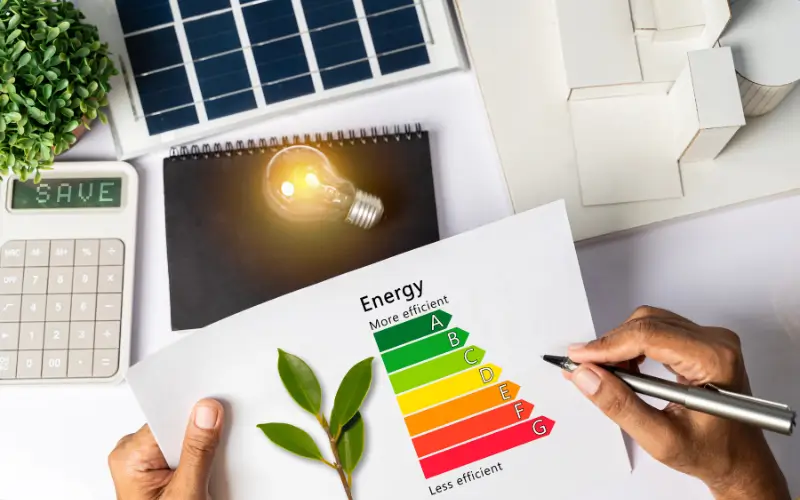Energy optimization is rapidly becoming a critical focus for businesses seeking to reduce operational costs, improve efficiency, and meet sustainability goals. But while the benefits are clear, one key concern often stands in the way: the cost of energy optimization. Understanding how these costs are structured and what pricing models exist can make all the difference in deciding when and how to invest in energy-saving initiatives.
In this article, we’ll dive deep into the world of energy optimization pricing models — exploring how costs are determined, the various pricing structures commonly used in the industry, and the factors that influence which model fits your business best. Whether you’re a facility manager, energy consultant, or a business owner looking to optimize your energy usage, this guide will provide the clarity you need to make informed decisions about your energy optimization investments.
Understanding Energy Optimization
Definition and Importance
Energy optimization refers to the strategic process of analyzing, managing, and reducing energy consumption within industrial, commercial, or residential settings. It involves using advanced technologies, data analytics, and control systems to enhance energy efficiency without compromising operational performance. By optimizing energy use, businesses can lower utility bills, reduce environmental impact, and improve overall sustainability.
Energy optimization is especially important today due to rising energy costs, stricter environmental regulations, and growing corporate responsibility towards reducing carbon footprints. Implementing energy optimization not only supports cost savings but also aligns with global efforts to combat climate change.
Key Factors Influencing Energy Optimization Cost
Several factors affect the overall cost of energy optimization projects:
- Type of Industry and Scale: Large manufacturing plants, commercial buildings, and data centers have different energy profiles, influencing the complexity and cost of optimization.
- Technology Used: Costs vary based on the sophistication of equipment such as smart meters, sensors, automation systems, and software analytics platforms.
- Energy Sources and Consumption Patterns: Facilities relying on diverse energy sources (electricity, gas, renewables) may need customized solutions impacting cost.
- Scope of Optimization: Whether the focus is on a single process, entire building systems, or multi-site optimization affects pricing and investment levels.
Components of Energy Optimization Costs
Understanding the breakdown of costs involved in energy optimization helps businesses plan their investments wisely. Energy optimization expenses typically fall into three main categories:
Initial Investment Costs
- Equipment and Technology Costs: This includes purchasing smart meters, sensors, energy-efficient hardware, control systems, and other devices needed to monitor and manage energy consumption.
- Software and Analytics Platforms: Costs related to energy management software, data analytics tools, and cloud-based monitoring solutions that analyze energy use patterns.
- Installation and Commissioning: Expenses for setting up and integrating new technologies, including labor, configuration, and initial testing to ensure systems work as intended.
Operational and Maintenance Costs
- System Maintenance: Ongoing costs to maintain sensors, meters, and control equipment to keep the system running smoothly.
- Data Management and Analytics: Continuous processing, storage, and analysis of energy data, sometimes requiring subscription fees or additional software licenses.
- Training and Consultancy Fees: Investment in staff training to use energy optimization tools effectively, as well as costs for external experts or consultants who assist with system operation and strategy.
Savings and ROI Considerations
- Payback Periods: The time it takes for the savings generated by energy optimization to cover the initial and ongoing costs.
- Cost-Benefit Analysis: Evaluating how different investments translate into operational savings and environmental benefits to justify expenditures.
Common Energy Optimization Pricing Models
Choosing the right pricing model is crucial to align energy optimization costs with your business goals and risk tolerance. Here are the most common pricing structures used in the industry:
Fixed Pricing Model
In a fixed pricing model, clients pay a predetermined fee for the energy optimization project regardless of the results. This model is straightforward and predictable, making budgeting easier.
Advantages:
- Clear upfront cost
- Simple contract terms
Disadvantages:
- Risk for clients if savings don’t materialize
- Less incentive for providers to maximize savings
Performance-Based Pricing Model
Also known as shared savings or outcome-based pricing, this model links fees to the actual energy savings achieved. The service provider may guarantee a minimum level of savings and get paid based on performance.
Advantages:
- Aligns provider incentives with client goals
- Reduced upfront investment risk for clients
Disadvantages:
- Complex measurement and verification processes
- Possible longer contract terms
Subscription-Based Pricing Model
Under this model, clients pay recurring fees—monthly or annually—for continuous access to energy management software and services. This is common with Energy Management Systems (EMS) and ongoing monitoring platforms.
Advantages:
- Lower initial costs
- Continuous updates and support
Disadvantages:
- Costs accumulate over time
- Savings depend on effective use of the system
Hybrid Pricing Models
Hybrid models combine elements of fixed, performance-based, and subscription pricing to offer flexibility. For example, a client might pay a fixed setup fee plus performance-based incentives and monthly monitoring fees.
When to Use Hybrid Models:
- Projects with multiple phases or technologies
- Clients seeking balanced risk and reward sharing
Factors Affecting Pricing Model Selection
Selecting the right pricing model for energy optimization depends on several key factors that relate to both the client’s situation and the service provider’s capabilities:
Client’s Energy Usage Profile
- Businesses with predictable and stable energy consumption may prefer fixed pricing for budgeting ease.
- Clients with variable energy use might benefit from performance-based models that reward actual savings.
Scale and Complexity of Optimization Project
- Large-scale, multi-site projects often require customized hybrid pricing to address varied needs.
- Smaller or less complex projects might be suited to straightforward fixed or subscription models.
Risk Tolerance and Financial Preferences
- Companies with low tolerance for financial risk may favor fixed pricing.
- Those willing to invest upfront for potential higher returns often choose performance-based or hybrid models.
Technology and Service Provider Capabilities
- Advanced providers with robust measurement, verification, and analytics tools can confidently offer performance-based contracts.
- Providers offering mainly software access may lean toward subscription pricing.
Emerging Trends in Energy Optimization Pricing
As technology and market demands evolve, new pricing models and approaches are shaping the energy optimization landscape:
Pay-As-You-Save (PAYS) Models
This innovative model allows clients to finance energy improvements through their utility bill savings. Instead of upfront costs, payments are made gradually as savings accrue, reducing financial barriers.
Outcome-Based Contracting and Energy-as-a-Service (EaaS)
Energy-as-a-Service bundles energy optimization, management, and maintenance into a single service contract. Pricing is often outcome-based, where clients pay for guaranteed energy performance rather than owning equipment.
Use of AI and Machine Learning in Cost Optimization
Advanced analytics powered by AI help refine pricing models by predicting energy usage patterns and identifying savings opportunities, enabling more dynamic and personalized pricing.
Impact of Renewable Energy Integration on Pricing
The growing adoption of renewables introduces new variables, such as variable energy generation and storage costs, influencing energy optimization pricing and contract structures.
How to Choose the Right Pricing Model for Your Business
Selecting the optimal energy optimization pricing model involves careful assessment of your specific needs, budget, and risk appetite. Here’s how to approach this decision:
Assessing Your Energy Goals and Budget
Begin by clearly defining your energy-saving targets and available capital. Are you aiming for quick wins with minimal investment, or long-term strategic improvements? Your budget constraints will influence the choice between upfront or performance-linked pricing.
Evaluating Provider Offerings and Contract Terms
Review what each service provider offers in terms of technology, support, and guarantees. Understand contract length, payment schedules, and exit clauses to ensure alignment with your business priorities.
Considering Long-Term vs Short-Term Savings
Fixed pricing might offer predictability in the short term, but performance-based models could yield greater savings over time. Weigh the trade-offs between cost certainty and potential upside.
Case Studies and Real-World Examples
Look for case studies or testimonials from businesses similar to yours that highlight successful pricing models and outcomes. Learning from others’ experiences can guide your decision.
Steps to Implement Energy Optimization Cost-Effectively
Implementing energy optimization while controlling costs requires a structured approach. Follow these key steps:
Conducting an Energy Audit
Start with a comprehensive assessment of your current energy consumption patterns. An energy audit identifies inefficiencies, potential savings, and prioritizes areas for optimization.
Identifying Optimization Opportunities
Analyze audit findings to select projects or technologies that offer the best cost-to-benefit ratio. Consider quick fixes alongside long-term investments.
Selecting Suitable Technologies and Pricing Models
Choose energy optimization solutions and pricing models that align with your operational needs and financial capacity. Engage with vendors to negotiate terms that balance cost and value.
Monitoring and Continuous Improvement
Implement monitoring systems to track energy use and savings in real time. Use data analytics to fine-tune operations and maintain performance, ensuring ongoing cost-effectiveness.
Conclusion
Energy optimization offers tremendous potential to reduce operational costs and enhance sustainability. However, understanding the energy optimization cost and the pricing models available is essential for making smart investment decisions. Whether you choose a fixed fee, performance-based contract, subscription, or hybrid pricing, aligning the model with your business’s energy profile, risk tolerance, and goals will maximize value.
By carefully evaluating your needs, exploring emerging pricing trends, and following a structured implementation plan, you can optimize energy use cost-effectively and confidently. With the right approach, energy optimization not only cuts costs but also contributes to a greener, more resilient future for your business.
Frequently Asked Questions (FAQs)
1. What is the typical cost range for energy optimization projects?
Costs vary widely depending on project scope, technology, and scale—from a few thousand dollars for small audits to millions for large industrial optimizations.
2. How do performance-based pricing models work?
Providers get paid based on the actual energy savings achieved, often with guaranteed minimum savings and shared benefits.
3. Can small businesses benefit from energy optimization pricing models?
Yes, many pricing models, especially subscription and pay-as-you-save, make energy optimization accessible and affordable for small businesses.
4. What are the risks involved with subscription pricing?
Costs can accumulate over time, and savings depend on effective use and ongoing engagement with the optimization platform.
5. How long does it take to see ROI from energy optimization investments?
ROI periods vary but typically range from 1 to 5 years, depending on the technology and project scale.




